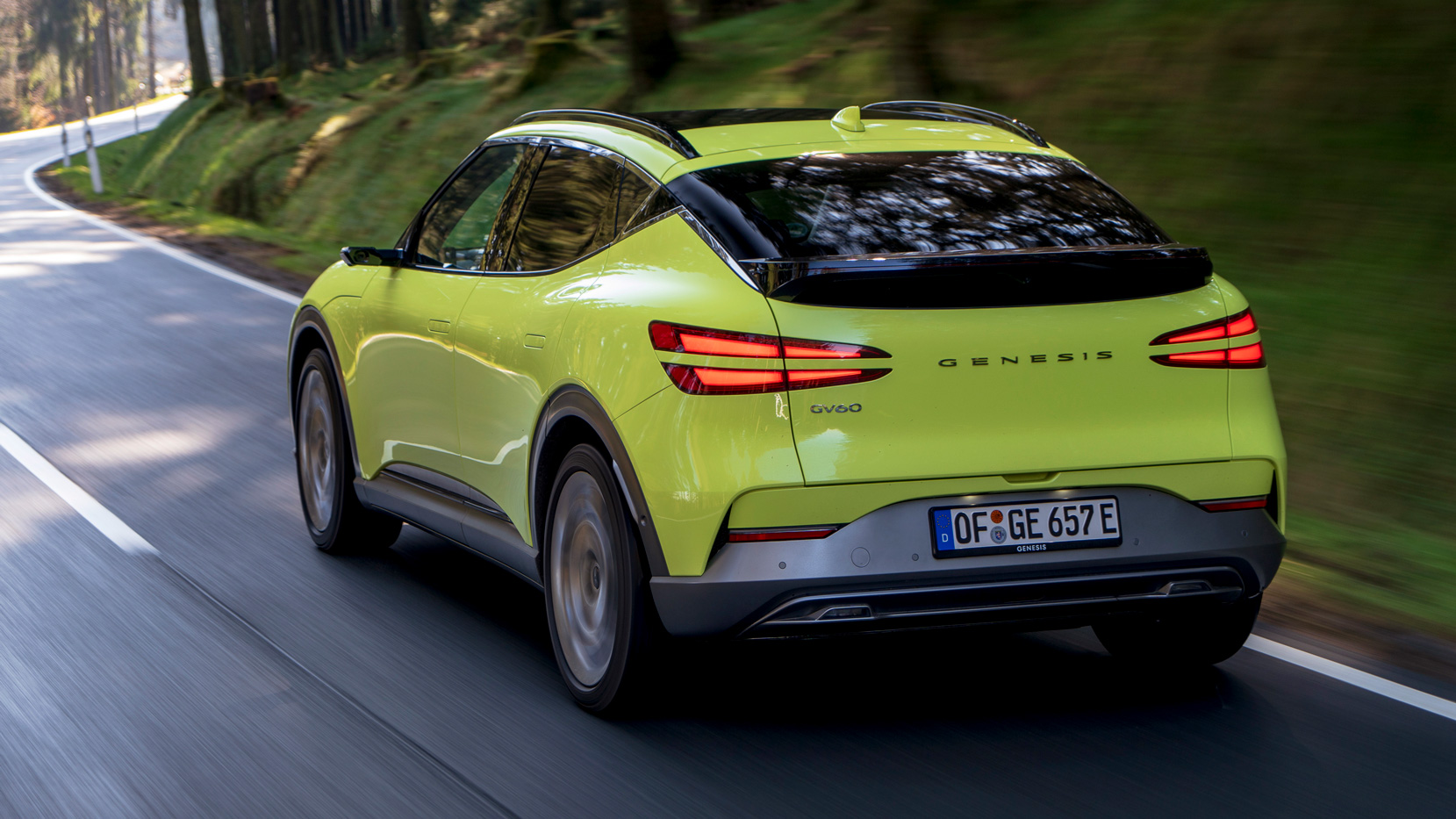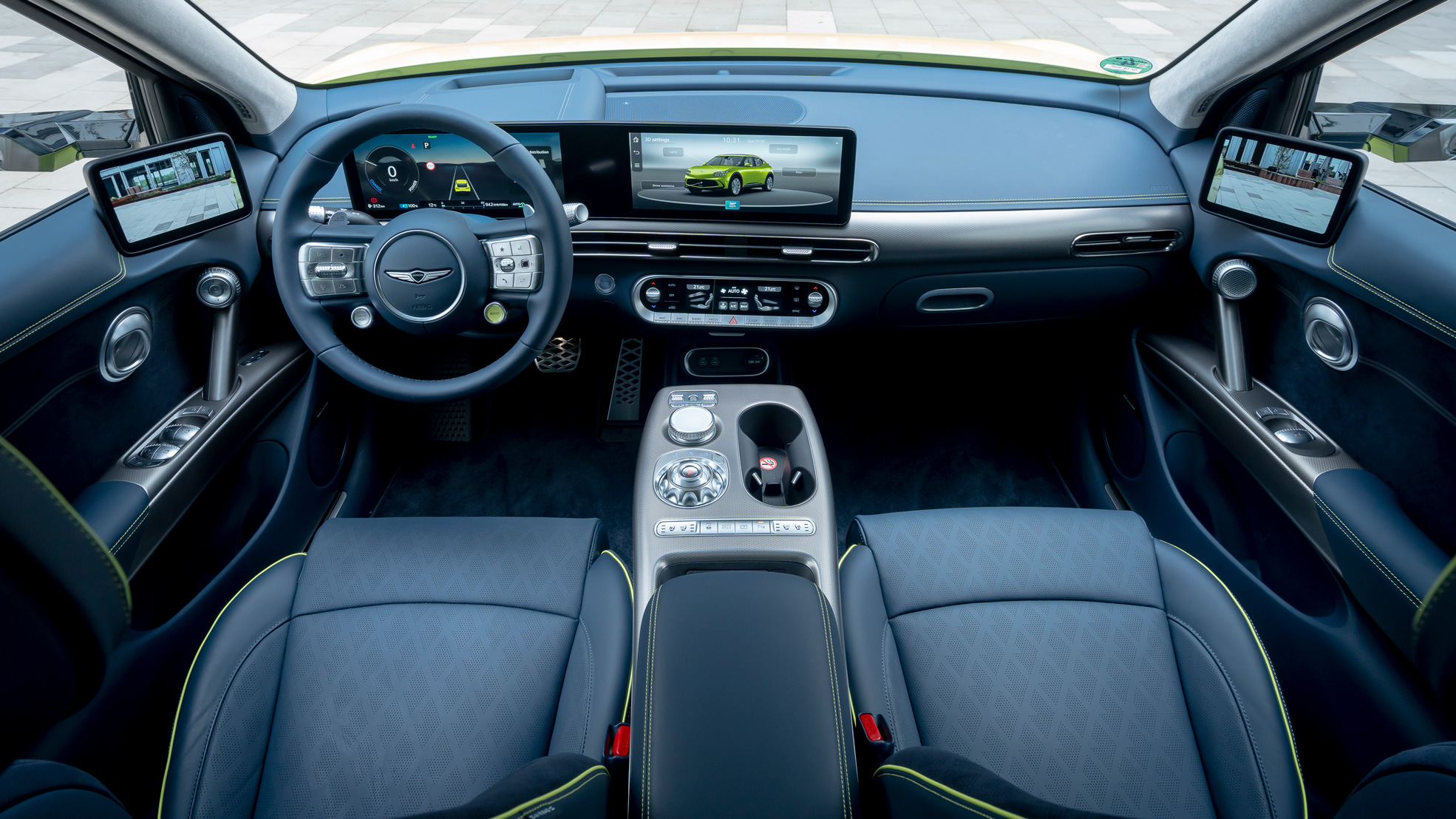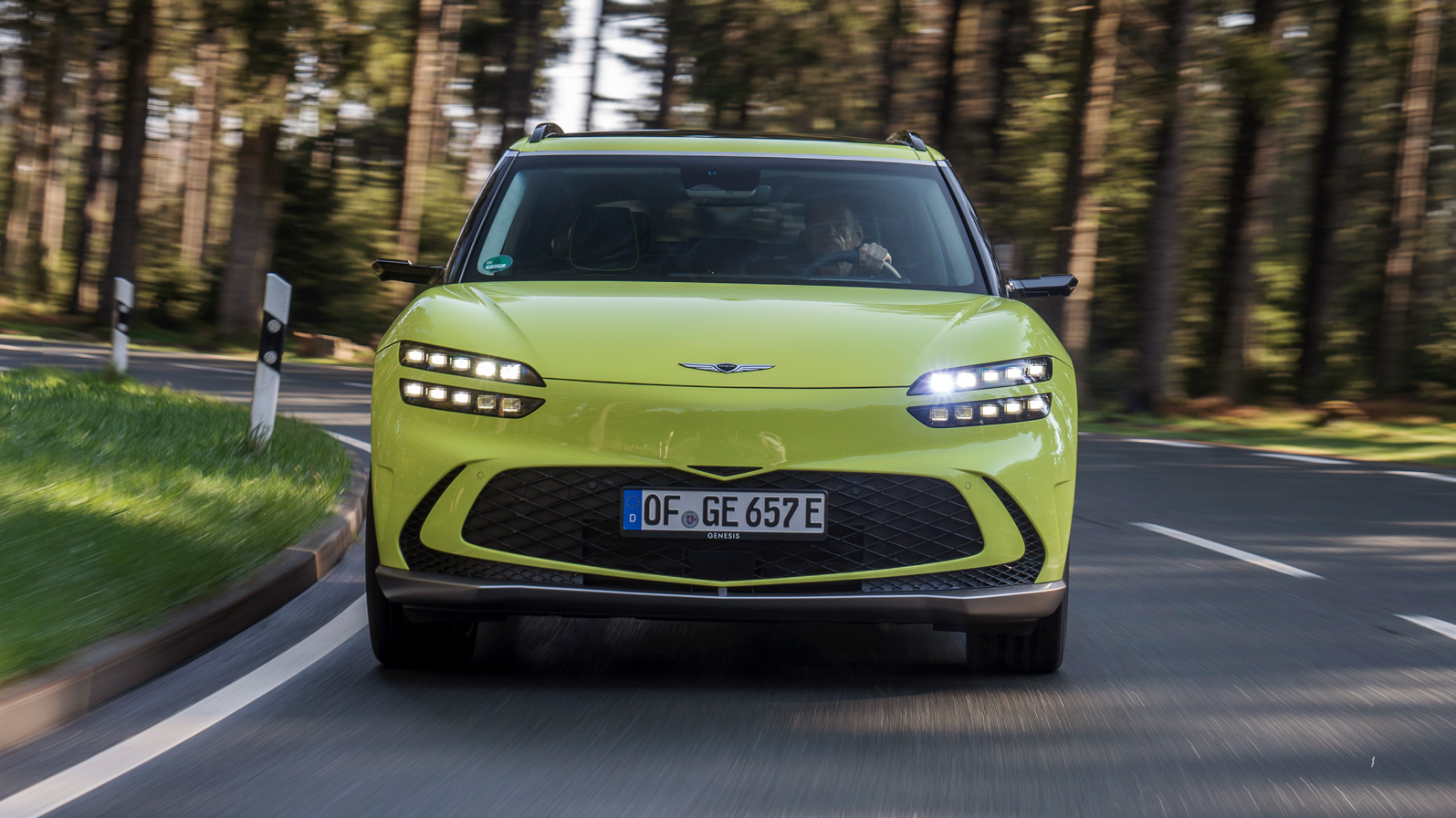
Interior
What is it like on the inside?
On the inside there’s a good sense of where Genesis has spent its money, although the interiors of the Kia EV6 and the Hyundai Ioniq 5 are both strong too. The GV60 gets some very interesting shapes and better quality materials though. The big talking point is that giant crystal ball in the middle of the centre console, although Genesis refers to it as a ‘Crystal Sphere’, presumably to avoid any psychic connotations. That’s actually the drive selector – it provides some mood lighting while the car is off, then flips over and reveals itself to be a rotating gearlever dial when the GV60 is ready to drive. Genesis wants it to be a new EV safety feature so that drivers know for certain when the car is turned on and ready to select drive or reverse. Makes sense to us.
What’s this about facial recognition?
It’s now standard fit on all GV60s and means you can leave your key at home. Press the door handle while looking at the B-pillar and the embedded camera will recognise your face and open the door. When you get in, a fingerprint sensor allows you to start the car. You think it’s a gimmick, but actually it’s surprisingly useful. Until it fails to work once (it doesn’t like strong sun behind you) at which point you realise you’re basically stranded.
How’s the driving environment?
The rest of the cockpit is very well laid out, with plenty of physical buttons for the functions you’ll use most of the time and even a separate climate control panel. The screens are two responsive 12.3-inch touch units for both the dial display and the central infotainment, and you’ll recognise lots of graphics from the Hyundai if you’ve driven both. There’s a proper clickwheel too for those that prefer to use one on the move.
Optional extras on all trim levels include a 17-speaker Bang & Olufsen surround sound system (definitely worth the money at £990) and a £1,120 panoramic roof. And then there are those digital mirrors. They’ll set you back £1,240 and can be tricky to get used to – particularly on the driver’s side. We’d avoid and spend the money elsewhere.
Is it practical?
It’s OK. As with the Ioniq 5, the hatchback styling convinces you it must be the size of a VW Golf. Actually it’s much bigger. And yet it’s not much bigger on the inside. Rear legroom is good, rear headspace is tolerable and the 432-litre boot is no better than average (the Tesla Model Y gets a monstrous 854 litres) There’s also a front boot, although it’s only 53 litres (20 litres if you have one of the 4WD models).
Featured

Trending this week
- Car Review
Volvo ES90






